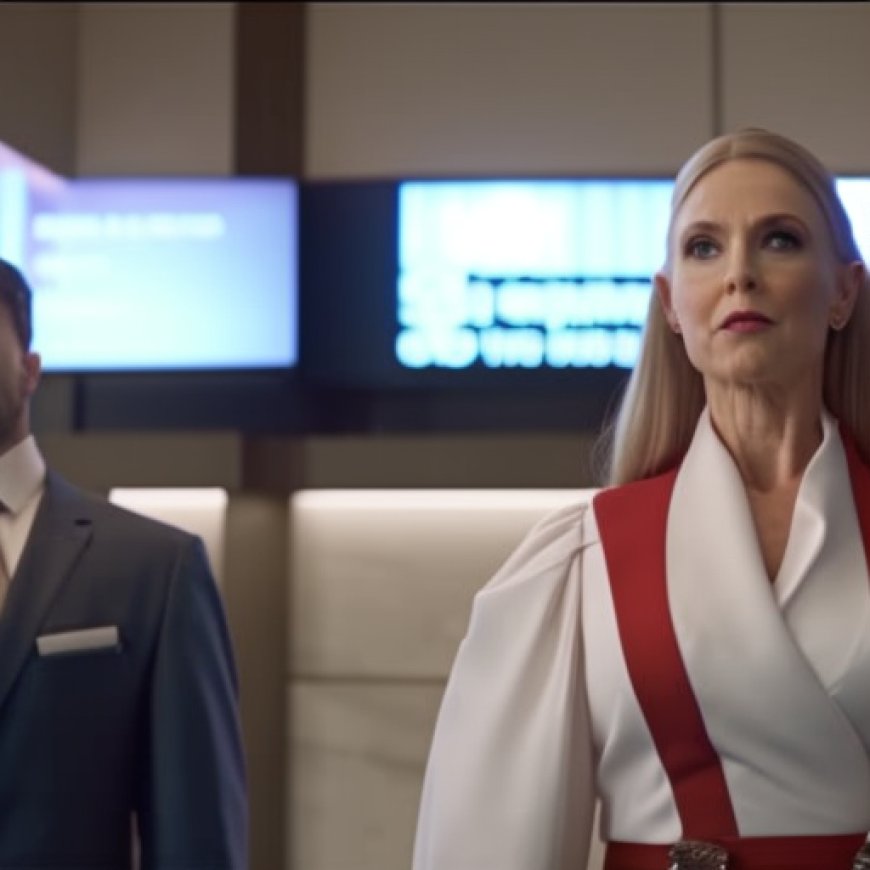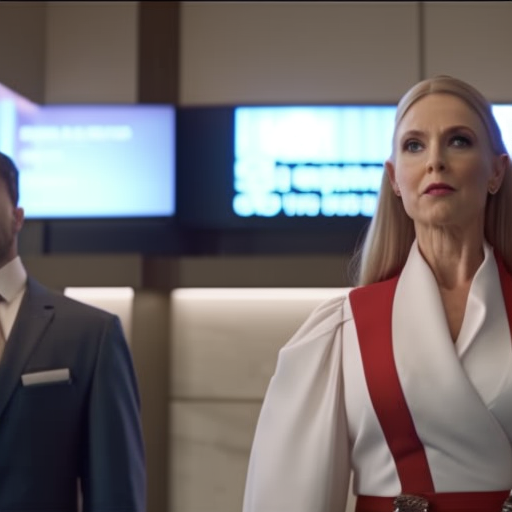LinkedIn Under Fire For Ageist Ads: Fails To Take Timely Action And Uphold DEI Policy
LinkedIn Under Fire For Ageist Ads: Fails To Take Timely Action And Uphold DEI Policy Forbes


Sustainable Development Goals (SDGs)
Goal 10: Reduced Inequalities
Goal 5: Gender Equality
LinkedIn Faces Backlash for Ageist Ads Stereotyping Older People
LinkedIn members have been pushing back for months against the company’s release of two ageist ads that stereotype older people as unaware and uneducated in business and technology. The ads were released in November 2023, and members of the LinkedIn community have been calling for removal ever since, without success. LinkedIn’s lack of timely response clashes with the DEI policy, which vows to protect individuals and groups (including age) from content that attacks, denigrates, intimidates, dehumanizes, and incites.
The Ageist Ads
The ads’ descriptions acknowledge that friends, parents, and even partners don’t seem to understand what people do in their jobs. LinkedIn and their ad agency of choice, Maximum Effort (co-founded by Ryan Reynolds), didn’t focus on the collective. Instead, they targeted older parents and presented them as ignorant.
- One ad shows an older woman talking about her son selling clouds. She sits in a chair in a dark, sparsely decorated living room with her silver hair pulled back. She speaks to the camera, looking over her glasses, which rest low on her nose. The conversation leaves her looking lost and bewildered.
- The second ad features an older man looking forlorn at the dining room table. His brows gently furrow as he laments his inability to understand his daughter.
When LinkedIn Ads, with almost 4.5M followers, released the cloud salesman ad featuring the woman, criticism of gendered ageism was swift and sharp.
Public Outrage and Criticism
- “Don’t know why you have to perpetuate the myth that older women don’t understand technology. I’m a 60-year-old engineer and have put up with this crap my whole life. It is ridiculous to mock old women — you can do better.” Lisa Thierbach, principal system design engineer, Maxar Technologies, Ann Arbor, MI.
- “It reinforces negative stereotypes about older adults. These same people face age discrimination in hiring every day. LinkedIn should be dispelling those stereotypes, not reinforcing them. Will you consider pulling the ad?” Maureen Ferreira, a digital marketing consultant in San Diego, CA.
- “There’s nothing creative or compelling about this campaign. Nor do I think it will drive anyone to LinkedIn’s B2B site. It’s memorable for all the wrong reasons,” said Lisa Balser, award-winning creative director, strategic brand coach, certified diversity executive.
- “As an older engineer, I find these ads incredibly offensive.” Elaine May, senior engineering manager at Netlify, Beaverton, OR.
- “This ad is so insultingly ageist. My father turned 81 yesterday. He knows exactly what cloud computing is – was a software engineer for his entire career, and he still consults. My mother was an elementary schoolteacher- she doesn’t understand cloud computing, but she could if I explained it to her – we all know it’s not a complex concept, so let’s stop patting ourselves on the back.” Jennifer Danvers, senior director of product management, Charlotte, NC.
A Rallying Cry Ensues
Ten days after the ads’ release, Ashton Applewhite published a response on her blog, “Yo, Is This Ageist?” A globally-renowned age activist and author of “This Chair Rocks: A Manifesto Against Ageism,” Applewhite wrote, “This utterly ageist campaign reinforces the insulting stereotype that olders are technologically ignorant. In fact, as multiple comments on LinkedIn attest, workers have to master a wide range of digital tools and technologies in order to be employable—and older people have been practicing and building those skills for decades.
Applewhite shamed LinkedIn for “portraying older people as inept and hostage to a generational disconnect. In fact, when someone doesn’t understand what someone else does for a living, it’s because they’re not interested or not trying hard enough—not because of an age difference,” she wrote.
Two months later, Janine Vanderburg, co-founder and senior strategist of Changing the Narrative, published an article on LinkedIn. She offered three reasons these ads were inappropriate and suggested appropriate next steps. In early February, LinkedIn Marketing Solutions Vice President Jim Habrig defended the ad, writing, “The ad is part of a campaign designed to drive conversations about challenges facing B2B marketers…”
Sandy Zwyer is one LinkedIn user who reported the ad as inappropriate. The Toronto-based freelance writer and editorial support specialist stated she made several attempts to report the ads as inappropriate. After some difficulty, she finally received a response from LinkedIn support.
“Thank you for writing back regarding this, I was able to check this at the backend, please note that this video was to depict the understanding of the ad in laymen point of view, although Council acknowledged some viewers would find the ads to be distasteful, they considered viewers would likely interpret the ads as light-heartedly suggesting that the acronyms and technical jargon associated with certain IT jobs that did not exist until relatively recently may not be generally understood by the older generation. Council considered the ad did not suggest all older people would be unaware of these terms, or that they would be incapable of understanding technology generally. We, therefore, concluded the ad was unlikely to cause serious or widespread offense on the grounds of age. Have a great day ahead.”
This comment suggests that, at some level, LinkedIn realized it was denigrating older people but enjoyed the laughs so much that it decided to go with it. In his launch post, Keith Browning, the director of brand marketing said that filming “was definitely the most I’ve ever laughed during a shoot.”
Portraying a specific segment as stupid and laughing at them seems, once again, in violation of LinkedIn’s DEI policy. Would they have turned race or disability into a joke?
In the meantime, Vanderburg’s LinkedIn article continued to garner negative comments directed at LinkedIn.
“It’s a little gobsmacking how obviously ageist this LinkedIn Ad campaign is!” Natasha Ginnivan, research fellow with the UNSW School of Psychology and an associate investigator with the Ageing Futures Institute in Sydney, Australia.
“This is blatant ageism and only furthers societally accepted stigma against our older citizens. Take this down, be better, please show some respect.” Walter Robinson, Founder and Principal, GSD-x-WJR, Ontario, Canada.
“LinkedIn, HELLO—you’re ageist ads are HIGHLY OFFENSIVE. They should be pulled immediately!”
SDGs, Targets, and Indicators Analysis
1. Which SDGs are addressed or connected to the issues highlighted in the article?
- SDG 10: Reduced Inequalities
- SDG 5: Gender Equality
The issues highlighted in the article relate to ageism and gender stereotypes, which are forms of discrimination and inequality. SDG 10 aims to reduce inequalities within and among countries, including age-based discrimination. SDG 5 focuses on achieving gender equality and empowering all women and girls.
2. What specific targets under those SDGs can be identified based on the article’s content?
- Target 10.2: By 2030, empower and promote the social, economic, and political inclusion of all, irrespective of age.
- Target 5.1: End all forms of discrimination against all women and girls everywhere.
The article highlights the need to empower and include older individuals in society, specifically in the context of employment and technology. It also emphasizes the importance of ending ageist and gendered stereotypes that perpetuate discrimination and inequality.
3. Are there any indicators mentioned or implied in the article that can be used to measure progress towards the identified targets?
- Indicator 10.2.1: Proportion of people living below 50 percent of median income, disaggregated by age group.
- Indicator 5.1.1: Whether or not legal frameworks are in place to promote, enforce, and monitor equality and non-discrimination on the basis of sex.
The article does not explicitly mention indicators, but the identified targets can be measured using these indicators. Indicator 10.2.1 can assess the economic inclusion of older individuals by measuring their income levels compared to the median income. Indicator 5.1.1 can evaluate the existence and effectiveness of legal frameworks in addressing age and gender discrimination.
Table: SDGs, Targets, and Indicators
| SDGs | Targets | Indicators |
|---|---|---|
| SDG 10: Reduced Inequalities | Target 10.2: By 2030, empower and promote the social, economic, and political inclusion of all, irrespective of age. | Indicator 10.2.1: Proportion of people living below 50 percent of median income, disaggregated by age group. |
| SDG 5: Gender Equality | Target 5.1: End all forms of discrimination against all women and girls everywhere. | Indicator 5.1.1: Whether or not legal frameworks are in place to promote, enforce, and monitor equality and non-discrimination on the basis of sex. |
Behold! This splendid article springs forth from the wellspring of knowledge, shaped by a wondrous proprietary AI technology that delved into a vast ocean of data, illuminating the path towards the Sustainable Development Goals. Remember that all rights are reserved by SDG Investors LLC, empowering us to champion progress together.
Source: forbes.com

Join us, as fellow seekers of change, on a transformative journey at https://sdgtalks.ai/welcome, where you can become a member and actively contribute to shaping a brighter future.







